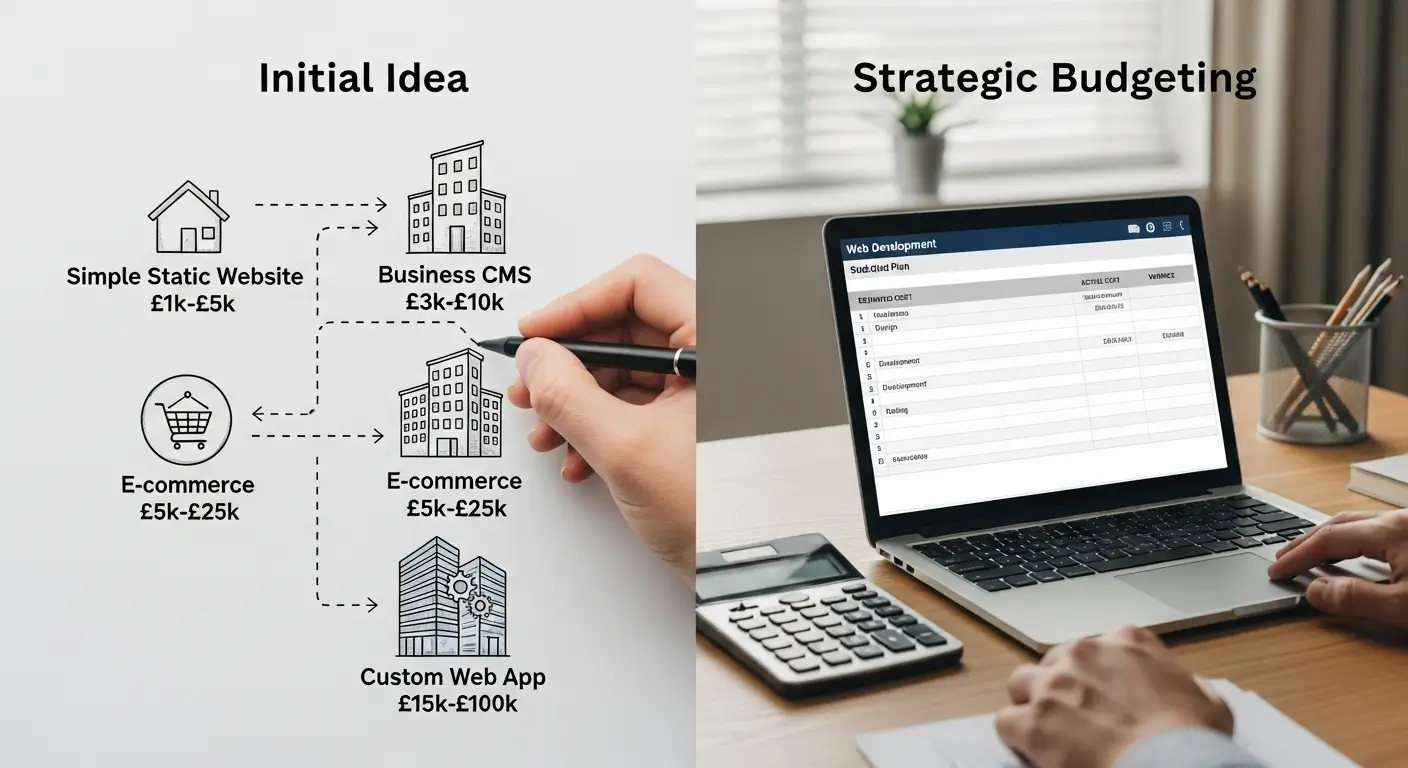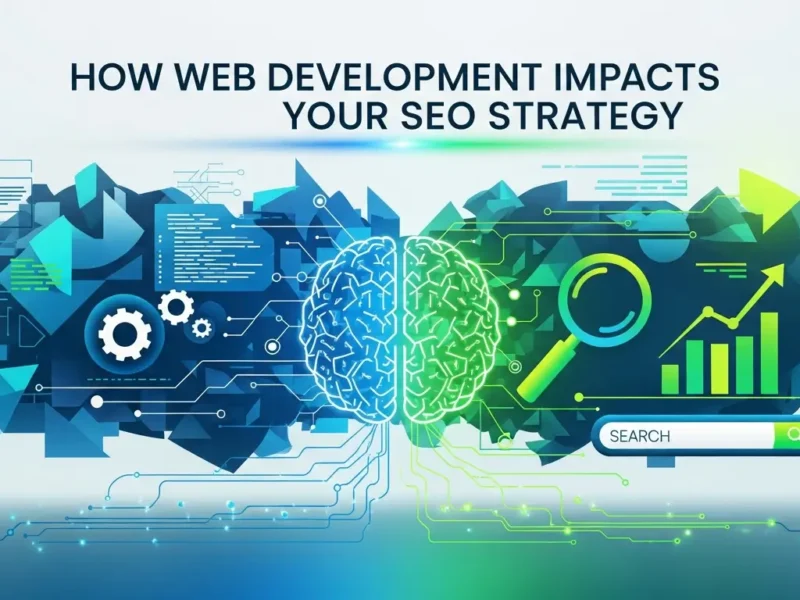In today’s digital-first world, a professional website is no longer a luxury but a necessity for businesses of all sizes. From showcasing products and services to driving online sales and building brand credibility, a well-designed and functional website is your 24/7 online storefront. But as you embark on this crucial journey, one question often looms large: “What does web development actually cost?”
The answer, unfortunately, isn’t a simple figure. The cost of web development is as varied as the websites themselves, influenced by a multitude of factors. Think of it like building a house – a cozy studio apartment will have a vastly different price tag than a sprawling mansion. This comprehensive guide to the web development process will break down the key elements that contribute to web development costs, help you understand what to expect, and provide practical advice on how to budget effectively for your online presence.
Understanding the Key Factors Influencing Web Development Costs
To accurately estimate your web development investment, it’s essential to understand the core components that drive pricing.
1. Website Type and Complexity
This is arguably the most significant cost driver. The type of website you need directly impacts the features, functionalities, and development time required.
- Simple Static Website (Brochureware): These websites typically feature a few pages (Home, About Us, Services, Contact) with static content. They are primarily informational and don’t require complex interactions or databases. Think small businesses needing an online presence.
- Estimated Cost Range: £1,000 – £5,000+
- Small Business Website with CMS: Adding a Content Management System (CMS) like WordPress allows you to easily update content without needing a developer. These often include blogs, basic contact forms, and a slightly larger number of pages.
- Estimated Cost Range: £3,000 – £10,000+
- E-commerce Website: Selling products online requires robust shopping cart functionality, payment gateway integrations, product management, user accounts, and secure transactions. Platforms like Shopify, WooCommerce, or custom-built solutions fall into this category.
- Estimated Cost Range: £5,000 – £25,000+ (and significantly higher for large-scale operations)
- Custom Web Application: These are highly specialized websites designed to perform specific, complex functions. Examples include social networks, online booking systems, project management tools, or custom CRM solutions. They often involve extensive database development, API integrations, and bespoke coding.
- Estimated Cost Range: £15,000 – £100,000+ (potentially much higher)
- Enterprise-Level Website: Large corporations often require highly scalable, secure, and feature-rich websites integrated with existing enterprise systems. These projects are massive in scope and complexity.
- Estimated Cost Range: £50,000 – £500,000+
2. Design and User Experience (UX/UI)
A visually appealing and intuitive website is crucial for engaging visitors. This aspect covers everything from the initial wireframing and prototyping to the final graphic design and user interface (UI).
- Template-Based Design: Using pre-made themes can save costs, especially for smaller projects. However, customization options might be limited.
- Custom Design: A bespoke design ensures your website stands out and perfectly reflects your brand identity. This involves a professional UX/UI designer crafting every element from scratch.
- Responsive Design: Essential for modern websites, responsive design ensures your site looks and functions flawlessly across all devices (desktops, tablets, smartphones). This is a standard expectation now, not an add-on.
3. Features and Functionality
Every additional feature you want adds to the development time and, consequently, the cost. Consider the following:
- Basic Features: Contact forms, image galleries, social media integration, basic SEO setup.
- Advanced Features: User registration/login, payment gateways, live chat, forums, multi-language support, custom animations, CRM integration, booking systems, advanced search filters, API integrations.
- Third-Party Integrations: Connecting your website with tools like email marketing platforms, analytics software, or CRM systems.
4. Content Creation
High-quality content is the backbone of any successful website. This can include:
- Copywriting: Crafting engaging and SEO-optimized text for all your website pages.
- Photography/Videography: Professional images and videos can significantly enhance your site’s appeal.
- Graphic Design: Creating custom logos, icons, infographics, and other visual assets.
5. Hosting and Domain Name
These are essential ongoing costs for any website.
- Domain Name: Your website’s address (e.g., yourcompany.com). Typically an annual fee.
- Web Hosting: The server space where your website files are stored. Costs vary based on the type of hosting (shared, VPS, dedicated, cloud) and the resources required.
6. Maintenance and Support
A website isn’t a “set it and forget it” asset. Ongoing maintenance is crucial for security, performance, and functionality.
- Security Updates: Regularly patching software and plugins to prevent vulnerabilities.
- Software Updates: Keeping your CMS, themes, and plugins up-to-date.
- Backups: Regular backups to prevent data loss.
- Performance Monitoring: Ensuring your site loads quickly and functions optimally.
- Content Updates: Adding new blog posts, products, or services.
- Technical Support: Having a team available to troubleshoot issues.
How Web Development Agencies Charge
Web development agencies typically employ a few different pricing models:
- Hourly Rate: You pay for the actual time spent by developers, designers, and project managers. This can be effective for smaller, well-defined tasks but can lead to unpredictable costs if the scope isn’t clear.
- Fixed-Price Project: The agency provides a single, all-inclusive quote for the entire project. This offers budget certainty but requires a very detailed scope of work upfront. Any changes outside the initial scope will likely incur additional charges.
- Retainer Model: Often used for ongoing maintenance, support, or continuous development, where you pay a recurring fee for a set number of hours or services per month.
Budgeting for Your Web Development Project
Effective budgeting is key to a successful web development project. Here’s how to approach it:
- Define Your Goals and Requirements: Before contacting any developers, clearly articulate what you want your website to achieve and what features it absolutelymusthave. What problems will it solve for your users or your business?
- Prioritize Features: Create a “must-have,” “nice-to-have,” and “future-phase” list. This helps you manage your budget and allows for scalable development. You don’t need to build everything at once.
- Research and Get Multiple Quotes: Contact several reputable web development agencies or freelancers. Provide them with your detailed requirements and ask for a comprehensive proposal. Compare not just the price but also the proposed solutions, experience, and communication style.
- Allocate for Ongoing Costs: Remember to factor in annual costs like domain renewal, hosting, SSL certificates, and potential maintenance plans.
- Build in a Contingency: Always add a 10-20% buffer to your budget for unexpected changes or unforeseen issues that may arise during development.
- Don’t Always Choose the Cheapest Option: While budget is important, the cheapest option can often lead to subpar quality, missed deadlines, and more expensive fixes down the line. Look for value, experience, and a strong portfolio.
- Consider a Phased Approach: If your budget is limited, consider developing your website in phases. Start with a minimum viable product (MVP) that covers your essential needs, and then add more features and functionalities in subsequent stages.
The Investment in Your Digital Future
Investing in web development is more than just a cost; it’s an investment in your business’s future. A professionally built website can drive leads, increase sales, improve customer service, and significantly enhance your brand’s credibility. While the initial outlay might seem substantial, the return on investment (ROI) can be immense when done right.
By understanding the factors that influence web development costs and employing a strategic budgeting approach, you can navigate this process with confidence and build an online presence that truly empowers your business. For businesses seeking reliable and innovative web development services, it’s crucial to partner with experts who understand both your local market and global digital trends.
Ready to bring your vision to life?
Don’t let the complexities of web development costs deter you. Reach out to us today for a free consultation. We’ll help you define your project scope, discuss your goals, and provide a transparent, detailed quote tailored to your specific needs. Let’s build something amazing together!



